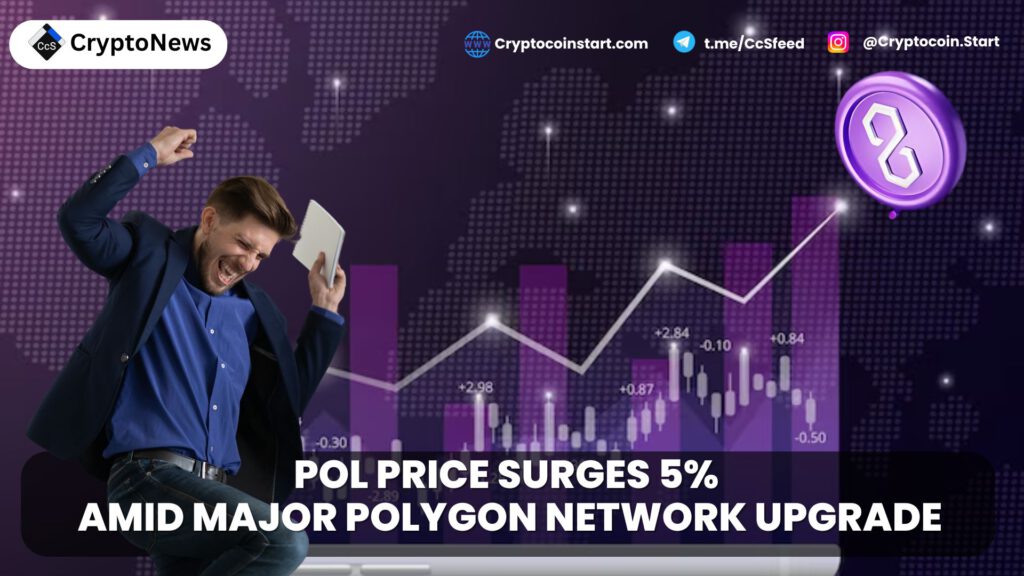
Ahmedabad Upgrade Brings New Features to Polygon PoS
Polygon’s Ahmedabad upgrade, initially tested on the Amoy testnet before being deployed to the mainnet, introduces a series of important enhancements. Activated at block #62278656, this upgrade comprises three Polygon Improvement Proposals (PIPs), each aimed at boosting developer tools, enhancing network security, and updating the platform’s token infrastructure.
The key improvements of the Ahmedabad upgrade include:
- Expanded Code Size: The most significant update, PIP-30, increases the maximum code size from 24KB to 32KB. This change allows developers to build more complex and sophisticated decentralized applications (dApps) on Polygon, without needing alternative solutions.
- Improved Gas Pricing: PIP-36 addresses issues related to gas pricing on plasma bridge transactions. This fix resolves problems with retrying failed state syncs, unlocking previously stuck bridge transactions and improving overall network transparency.
- Token Symbol Change: As part of PIP-45, Polygon’s native token has transitioned from MATIC to POL, with the wrapped version changing from WMATIC to WPOL. This rebranding aligns with Polygon’s broader ecosystem transformation.
These updates are expected to place greater emphasis on developer innovation, further increasing Polygon’s utility as developers leverage the enhanced tools to deploy complex smart contracts and dApps.
Token Symbol Change: MATIC to POL
One of the most notable aspects of the Ahmedabad upgrade is the rebranding of Polygon’s native token. MATIC has now officially been replaced with POL, marking a new chapter in the platform’s evolution. This move reflects a wider shift towards creating a more integrated and efficient ecosystem, one that builds on the success of the platform’s core token.
Under PIP-45, the transition also affects the wrapped token, changing WMATIC to WPOL. For users, this change does not require any immediate action as the network transition has been seamless. However, it does signal Polygon’s intention to enhance the branding and functionality of its native token, which is expected to have a positive long-term impact on its adoption and use cases.
All node operators, validators, and infrastructure providers have already upgraded their systems to the latest versions of Bor (v1.4.0) and Erigon (v2.60.8). This ensures full compatibility with the new changes introduced by the Ahmedabad upgrade. For end-users and developers, no further action is necessary following the upgrade, ensuring a smooth transition without disruptions.
POL Price Surge and Market Response
The market response to Polygon’s Ahmedabad upgrade has been overwhelmingly positive. Following the activation of the update, POL saw a 5% price increase, reflecting renewed investor confidence in the platform’s future growth and potential. The upgrade has enhanced developer capabilities and network efficiency, driving optimism about the long-term prospects of the Polygon network.
Blockchain analytics firm IntoTheBlock reports that 61.38% of all addresses holding POL are currently in profit. This statistic indicates that the token has strong market support, with a large number of investors benefiting from its rising value. The improvements brought by the Ahmedabad upgrade are likely to continue strengthening investor sentiment and driving further growth in the token’s market value.
The positive reaction from the crypto community can be attributed to several factors:
- Developer-Friendly Enhancements: The expanded code size and other technical upgrades provide a more robust environment for developers, encouraging the creation of more advanced dApps on Polygon.
- Improved Network Efficiency: The fix for gas pricing issues on plasma bridge transactions has enhanced the overall efficiency and reliability of the network, contributing to greater trust among users and developers alike.
- Rebranding and Token Transition: The switch from MATIC to POL has been seen as a smart move in line with Polygon’s vision for its ecosystem. This rebranding effort is expected to further cement POL’s position within the broader blockchain space.
Looking forward, many analysts believe that the Ahmedabad upgrade, combined with the growing number of dApps and developers using Polygon, positions the network for continued expansion. As the network evolves, the potential for further price surges in POL remains high, making it an exciting token to watch in the coming months.
Conclusion
In summary, the Ahmedabad upgrade has ushered in a new era for Polygon, bringing critical improvements to its PoS mainnet and laying the groundwork for future innovations. With the token rebranding from MATIC to POL, expanded code size, and improved gas pricing mechanisms, the platform is poised for greater adoption and usage. This progress has already been reflected in the market, with POL experiencing a 5% price surge and continued confidence from investors.
As Polygon continues to evolve, developers, users, and investors can expect even more exciting updates and opportunities in the near future.

